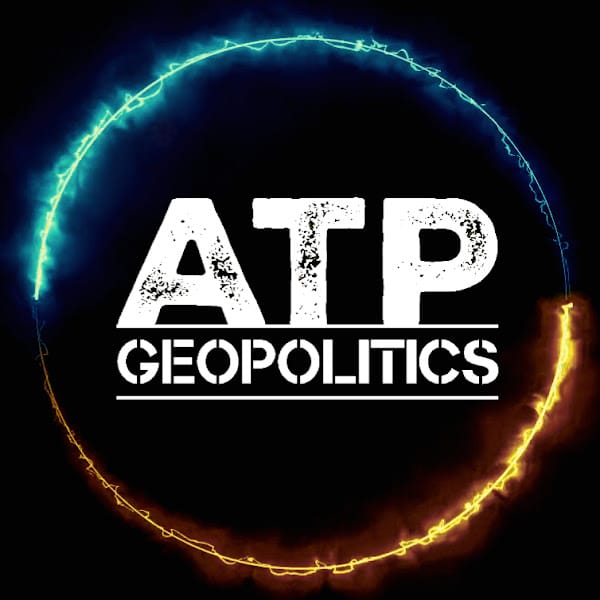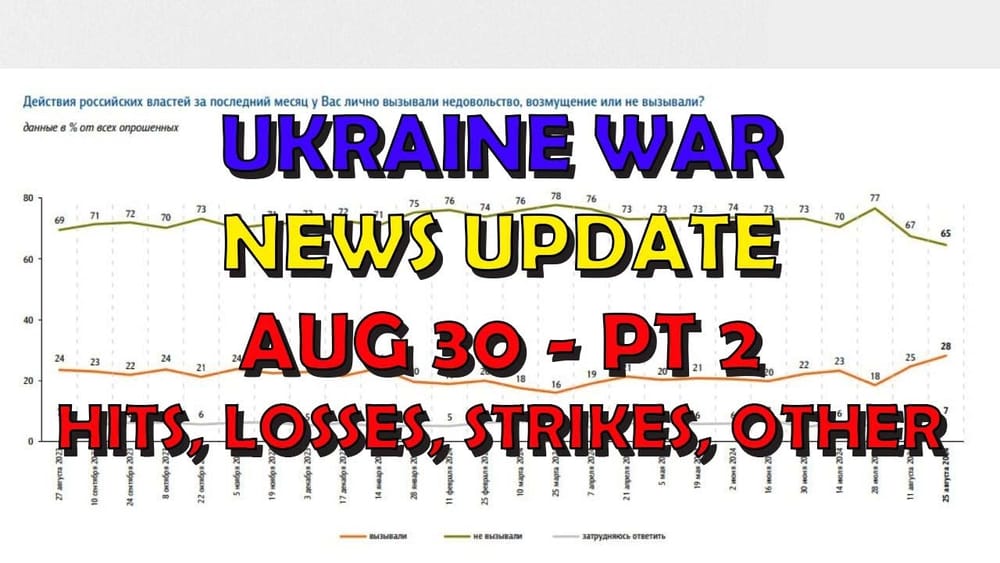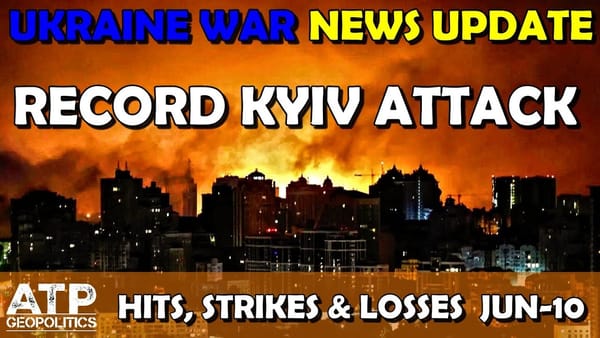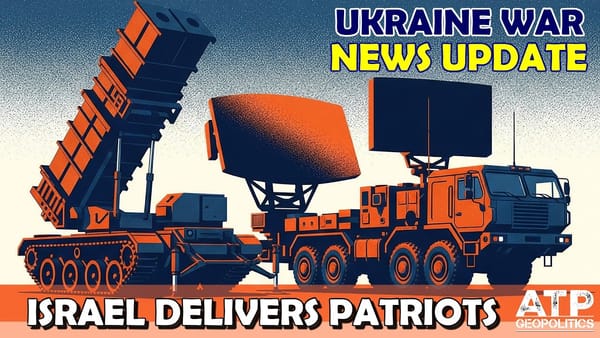Ukraine War Update NEWS: Pt 2 - Overnight & Other News
Table of Contents 📖
"The death figures are far, far worse than the Russians would be admitting, but you could probably say the same for the Ukrainians as well."
Hello Team
🎦 00:00-00:21⏩
Jonathan welcomes viewers to the second Ukraine War News Update for 30th August 2024, focusing on losses and statistics from the past 24 hours.
Return to top⤴️
Russian Daily Losses (General Staff Figures)
🎦 00:21-01:41⏩
Jonathan reviews the Ukrainian General Staff's figures for Russian losses, noting:
- 1,200 personnel (substantial)
- 3 tanks (low)
- 23 troop-carrying AFVs (above average)
- 23 artillery systems (above average but low for the category)
- 1 MLRS
- 1 anti-aircraft system
- 57 vehicles and fuel tanks
- 2 pieces of special equipment
He speculates that the lower numbers in some categories (e.g., tanks, IFVs) could indicate a slowdown in fighting across most front lines, except for intensified battles near Prokhorivka (south), Turetsk, New York, Vuhledar (Donetsk), and Kursk (up into Russia).
Return to top⤴️
Reduced Russian Mechanised Assaults?
🎦 01:41-02:25⏩
Jonathan observes a decrease in videos showing typical Russian attacks with multiple vehicles, suggesting a possible decline in such assaults. He notes that this is anecdotal but aligns with the lower reported losses of tanks and IFVs in recent days.
Return to top⤴️
Ukrainian 46th Air Mobile Brigade Repels Assault
🎦 02:25-03:25⏩
Jonathan highlights a video showing the Ukrainian 46th Air Mobile Brigade repelling a large-scale Russian mechanized assault in the Kirovohrad direction (south, towards Vuhledar). He notes the Ukrainians destroyed 13 out of 17 Russian armored vehicles using FPV drones and anti-tank guided missiles, demonstrating the effectiveness of these weapons.
Return to top⤴️
Combat Losses: Initiative Shift and Equipment Analysis
🎦 03:25-06:10⏩
Jonathan analyses the types of equipment losses for both sides, observing:
- Combat losses are roughly 1:1, with Ukrainians potentially losing slightly more due to operations in Kursk.
- The decrease in destroyed Russian combat assets could indicate either fewer attacks, the use of different vehicles (e.g., motorcycles), or a combination of both.
- Ukrainian losses include MRAPs, APCs, IFVs, and a Bradley, suggesting active troop movements and attacks, especially in Kursk, where these vehicles are more suitable than tracked vehicles.
- Most destroyed Ukrainian MRAPs are Western-provided, indicating a reliance on newer equipment.
- Russian losses mainly consist of older Soviet-era equipment, including a Buk-M3 air defense system, artillery, tanks, and IFVs.
Jonathan suggests that the shift in initiative towards Ukrainian attacks explains their higher losses. He emphasizes that while Ukrainian losses are never good news, they reflect their proactive efforts to reclaim territory and force Russian reactions.
Return to top⤴️
Andrew Perpetua's Personnel Loss Analysis
🎦 08:51-12:37⏩
Jonathan discusses Andrew Perpetua's work on visually confirming Russian personnel losses using open-source information, noting:
- Perpetua has meticulously counted visually confirmed Russian combat deaths for the past 11 days, averaging around 65 per day.
- Projecting this figure over a year results in an estimated 23,000 deaths, a "benchmark minimum" considering not all casualties are captured on video.
- Jonathan emphasizes the distinction between equipment and personnel loss verification, with the latter involving more guesswork.
- While Ukrainian General Staff figures might overestimate personnel losses, Perpetua's 23,000 figure provides a stark contrast to any lower figures claimed by Russia.
Jonathan highlights Perpetua's efforts as a crucial tool for understanding the war's human cost and challenging Russian narratives that downplay their losses.
Return to top⤴️
Ukrainian F-16 Loss: Context and Implications
🎦 12:37-17:11⏩
Jonathan addresses the recent loss of a Ukrainian F-16 fighter jet, emphasizing:
- The incident occurred during a Russian missile attack, not in direct combat with other aircraft as some reports suggest.
- The pilot, Alexei Mezhyhirsky, was killed after reportedly shooting down three cruise missiles and a drone.
- While a significant loss, Jonathan argues that it is primarily logistical as F-16s are replaceable.
- He highlights the greater challenge of training pilots, which creates a bottleneck in replacing lost personnel.
Jonathan argues that Russia's ability to replace lost aircraft and train pilots is more limited due to sanctions, making their losses more significant than Ukraine's. He advocates for training a "stupendous amount" of Ukrainian pilots and providing them with as many jets as possible to gain air superiority, accepting that some aircraft losses are inevitable.
Return to top⤴️
Media Reporting of F-16 Loss and Origin
🎦 17:11-20:47⏩
Jonathan criticizes misleading media reports about the Ukrainian F-16 crash, highlighting:
- Many outlets, including the Wall Street Journal, CBS News, and the New York Post, emphasized the jet being "US-made" even though F-16 production and upgrades involve multiple European countries.
- He argues that this framing caters to American audiences but is technically inaccurate and fuels misconceptions about US involvement.
- Jonathan cites John Richards' clarification that Ukrainian F-16s likely originated from European assembly lines using parts from various countries, including Norway, Belgium, Denmark, the Netherlands, and the US.
Jonathan expresses frustration with the inaccurate reporting, suggesting it could lead to misunderstandings among the American public. He prefers precise information over sensationalized headlines.
Return to top⤴️
Tributes to Fallen Ukrainian Pilots "Juice" and "Moonfish"
🎦 20:47-21:26⏩
Jonathan shares tributes to two fallen Ukrainian pilots, "Juice" and "Moonfish", who died in August 2023 and recently, respectively. He recounts how former US Congressman Adam Kinzinger met with both pilots when they visited the US to lobby for F-16s. Jonathan praises Kinzinger for his unwavering support of Ukraine, noting his continued use of the Ukrainian flag and "Slava Ukraini" on his social media. He also notes comments from "Max24" praising the 46th Air Mobile Brigade's successful defense against a Russian attack.
Return to top⤴️
Recent Drone and Missile Strikes
🎦 21:26-22:52⏩
Jonathan discusses recent drone and missile strikes, noting:
- After three nights of intense drone attacks and one night of a massive missile attack (followed by a decrease in missile strikes), Russia appears to have returned to its "normal" pattern of strikes.
- Russia launched 18 drones at Ukraine, with 12 intercepted, four lost to electronic warfare, and two hitting their targets, indicating successful Ukrainian defenses overall.
- Russia claimed to have shot down 18 Ukrainian drones overnight, with 11 allegedly downed over Bryansk, four over Kaluga, two over occupied Crimea, and one over Belgorod.
Explosions in Crimea and Strikes on Oil Infrastructure
🎦 22:52-29:19⏩
Jonathan reports on explosions in Crimea and continued strikes on Russian oil infrastructure:
- Despite Russian claims of only two drones hitting targets, Jonathan mentions reports from Tim White and Max24 indicating explosions near Kirovske airfield and Dzhankoi (a major logistical and military hub) in Crimea.
- He highlights the ongoing fire at the Atlas oil depot in Rostov, still burning three days after being struck, and the Proletarsk oil depot, which has been burning for 13 days.
- Jonathan cites Maca Berry, an expert on oil depot fires, who explains that even tanks not directly engulfed in flames can suffer metallurgical damage, potentially rendering entire depots useless.
- Anton Gerashchenko provides a summary of attacks on Russian oil refineries and depots over the past three months, highlighting the cumulative impact on Russia's energy infrastructure.
Jonathan suggests that these strikes, coupled with reports of the Moscow Ministry of Emergency Situations being put on high alert, indicate growing Russian concern about the vulnerability of their infrastructure.
Return to top⤴️
Russian Response to Ukrainian Strikes: Paranoia and Public Discontent
🎦 29:19-30:37⏩
Jonathan discusses the impact of Ukrainian strikes on Russian public opinion and the authorities' response, noting:
- Moscow authorities are moving school assemblies indoors for "security reasons," indicating concern about potential strikes.
- This paranoia reflects the reality of the war reaching Russian soil, forcing them to react.
Detention of Former Russian Deputy Defence Minister
🎦 30:37-32:20⏩
Jonathan reports on the arrest of Pavel Popov, Russia's former Deputy Defence Minister:
- Popov, who served for 11 years and oversaw Russia's defense control centers, was detained on charges of large-scale fraud.
- The charges relate to his alleged involvement in fraudulent activities at Patriot Park, a military theme park.
- This arrest follows a pattern of sidelining or removing old-guard military figures, including potentially Gerasimov.
Jonathan questions whether these actions point to internal instability within the Russian military or a genuine attempt to address corruption. He reiterates that each data point should be assessed against the bigger picture of the war's trajectory.
Return to top⤴️
Dmitry Medvedev's Justification for Russian Aggression
🎦 32:20-35:34⏩
Jonathan dissects Dmitry Medvedev's recent statement justifying Russia's brutal tactics in Donbas:
- Medvedev claims that Donbas holds $7.3 trillion worth of mineral resources, justifying the loss of "a few hundred thousand Russian lives."
- He accuses the West of being motivated by resource theft, projecting Russia's own imperialistic ambitions onto Ukraine.
Jonathan refutes Medvedev's claims, emphasizing:
- Russia is the aggressor, invading Donbas in 2014 and continuing its aggression.
- Ukraine's pursuit of EU and NATO membership reflects its agency, not Western manipulation.
Jonathan highlights the absurdity of Medvedev's argument, given Russia's clear history of expansionism and interest in Ukraine's resources.
Return to top⤴️
Intense Fighting Near Prokhorivka and Situation in Turetsk
🎦 35:34-37:10⏩
Jonathan discusses the situation in Prokhorivka and Turetsk:
- General Zaluzhnyi, Commander-in-Chief of the Ukrainian Armed Forces, admits that fighting near Prokhorivka is exceptionally brutal.
- Jonathan notes a puzzling aspect: while the fighting is fierce, Ukraine has committed limited forces to the area, raising questions about their strategy.
- He speculates whether Ukraine is luring Russian troops in for a counteroffensive or if other factors are at play.
- Meanwhile, Turetsk, north of Prokhorivka, faces intense fighting and destruction, reminiscent of the battles for Bakhmut, Sievierodonetsk, and other cities reduced to rubble by Russian forces.
- Jonathan laments the devastation inflicted upon Ukrainian cities, questioning the true cost of "liberation."
Kursk Counteroffensive Update: Stalemate, Shelling, and Paramilitaries
🎦 37:10-41:05⏩
Jonathan provides an update on the situation in and around Kursk:
- Def Mon's data shows that the Russian advance rate near Prokhorivka has doubled since the start of the Kursk counteroffensive, indicating that the Ukrainian operation hasn't halted Russian gains in that specific area.
- However, the counteroffensive has likely diverted Russian resources from other fronts.
- The fighting in Kursk itself has slowed down, with both sides digging in, signaling a shift towards a more static frontline.
- Despite the slowdown, Russian forces are heavily shelling the city of Sudzha and surrounding areas with guided munitions and artillery.
- Russian authorities are forming armed volunteer units in Kursk, suggesting a need to bolster defenses.
Jonathan analyses these developments, acknowledging that the initial momentum of the Kursk counteroffensive has slowed down as expected. He suggests that Ukraine's strategy now focuses on consolidating gains and preparing for a long-term fight.
Return to top⤴️
Russian Paramilitaries Leaving Burkina Faso
🎦 41:05-42:17⏩
Jonathan reports that approximately 100 members of the "Bear" Brigade, a Russian paramilitary group, are reportedly leaving Burkina Faso to assist with the situation in Kursk. This suggests a need to reinforce Russian defenses in Kursk, potentially highlighting a shortage of manpower.
Return to top⤴️
Rising Discontent Among Russians
🎦 42:17-43:51⏩
Jonathan concludes by discussing the impact of the war on Russian public opinion:
- Citing data from the Russian Public Opinion Foundation, he reveals that 28% of Russians expressed "outrage or dissatisfaction" with the government's actions in the past month.
- This level of discontent is the highest since the mobilization announcement in November 2022, which sparked widespread protests and dissent.
- The data suggests that the ongoing fighting in Kursk and the war's impact on Russian soil are contributing to growing public dissatisfaction with the government.
Jonathan highlights this trend as a significant development, indicating that the Kremlin's narrative might be losing its grip on a portion of the population as the war drags on and its consequences hit closer to home.
Return to top⤴️
Wrap up
🎦 43:51-43:54⏩
Jonathan thanks viewers for watching and expresses gratitude for their support.
Return to top⤴️




